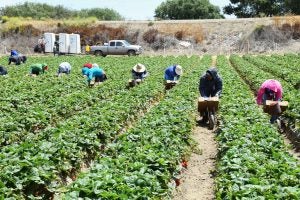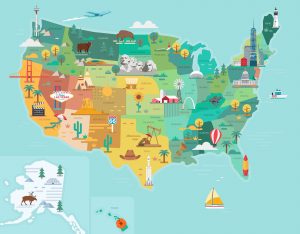My experience as an undergraduate student has been unique because I’ve taken several courses across different disciplines such as agricultural sciences, public relations, ethnic studies, and social and behavioral science. But ultimately, I started my academic journey as an agriculturist.
Sometimes I wonder how different my educational experience would have been if I had only taken the classes I needed for my degree in agriculture — there are gaps in agricultural higher education that I noticed needed to be filled.
Agriculture is unique in that it comprises many different disciplines: biology, chemistry, physics, economics, physical geography, but there’s also a sociological aspect to it as well that is often under looked. There has to be a sociological aspect. Agriculture is the science/art of raising plants and animals for human needs. Without human interaction, it wouldn’t be agriculture, it would simply be biology.
» Explore more Diversity In Agriculture here
While my agriculture courses taught me a great deal about the science and economics behind the industry, I wish it had touched more on the human values of it as well. There are plenty of ways agriculture and social science intersect, but the opportunity to learn this is missed when it isn’t an emphasized requirement in the curriculum.
Here are three subjects you need to integrate into your higher education curriculum to revolutionize your agricultural education.
Diversity and Ethnic Studies
When I reflect on my K-12 social science education, I notice an obvious inequity in representation in the curriculum. I enjoyed taking university ethnic studies classes because they were relatable and exposed me to the historical and contemporary impacts of diverse communities in this nation in a way I never have before.
Taking classes like Black/African American studies, women’s studies, queer and trans studies, and Chicanx/Latinx studies allowed me to appreciate each community’s culture and societal impact throughout society. This is necessary in a society that’s constantly changing and growing in diversity.
Diversity studies/intersectional ethnic studies classes allowed me to understand and appreciate different parts of agricultural history from a diverse lens and appreciate the roles different communities played in our industry.

My Chicanx studies professor is huge on The Bracero Program (which brought millions of Mexican guest workers to the United States) and taught me so much about how Latine immigration and the labor market correlate especially in the agricultural sector. I gained lots of perspective reading about Black/African American experiences and achievements in agriculture such as the Second Morrill Act of 1890, which established state agricultural colleges for Black students.
This is a big step up from my K-12 social science education, where Black/African American studies started with slavery and ended with Martin Luther King Jr., or where the highlights of Mexican-American history often didn’t extend any further than the farmworkers rights movement and names like Cesar Chavez. I never even learned one bit of LGBTQ+ history until college.
Intersectional ethnic studies/diversity studies is like a forgotten component of our nation’s history, and it feels great to learn about these missing parts of history, especially when you can finally see yourself being accurately represented. Without intersectional ethnic studies/diversity studies, our stories would continue to go untold.
Sociology
Sociology is unique in that it allows us to study and observe the social impacts of human behavior. This is a major component of agriculture because, as mentioned before, agriculture cannot exist without human activity. Where there is human activity, there is a human need, which is delegated and sorted out by us the people.
When you apply sociology to agriculture, you see how our work impacts people in ways we don’t typically think about. The result of agricultural production is not always as simple as just having food on people’s tables. There are issues that make food and agriculture inaccessible to many people, many communities are being negatively affected by agricultural production, and sociology allows us to unpack this.

Farm workers do so much to ensure food reaches our tables and are often not fairly compensated for their labor or ensured food for their own families. Raising food prices, gentrification, geographical location and socioeconomic class are all driving factors in food insecurity and are oftentimes out of people’s control. Indigenous communities in South America are displaced from their land because of expansion of agricultural production — where are they supposed to go now? Unions are still fighting, and environmental racism proceeds to exist.
Sociology is our reminder that not everything is a one-way street. The impact of agricultural production does not start when the seeds are planted and it doesn’t stop when the harvested crops hit the shelves, and not every consumer is benefiting from this. When things get better for one group of people, another group of people usually suffer because of it, and these examples just mentioned remind us of exactly that. Unfortunately, many agricultural university students don’t get the opportunity to learn about this.
Communication Studies
Now I’m going to admit, when I first heard about communication studies, I had no idea what it was. I used to think to myself, “Does there really need to be a major dedicated to how we communicate?” Ironically enough, my communication studies classes have been some of the most impactful ones in my undergraduate coursework for my social science degree. Now I’m left wishing I took more of these classes.
A component of communication studies that stood out to me the most and really got me thinking about its applicability in agriculture was my intercultural communication class. Intercultural communication focuses on the interaction of people coming from different cultures, or in other words it essentially helps us make the “weird” sound normal, and the “normal” sound weird.

When applied in an agricultural context, intercultural communication helps us as agriculturalists understand how our lifestyle and profession can be peculiar to those unfamiliar with agriculture and vice versa.
Sometimes our ties and roots to agriculture are so strong that it’s easy for us to forget why others don’t understand, and this can get in the way of communicating agriculture. While many of us are used to the smell of dairy farms, the loud sound of tractors passing, and quick access to a field with crops, other people have a completely different upbringing. You’d be surprised at how many people I met in college who didn’t know what agriculture really was, most of which come from non-rural areas of the state of California like Los Angeles or San Francisco.
Being that the agricultural industry faces lots of backlash, controversy, and misconceptions, it is important to understand how to successfully communicate the mission and story of agriculture to the general public in an understandable and digestible way. This is a very helpful skill to have as communicators and leaders of this industry. This also makes it easy to see why many universities’ agricultural communication programs require students to take intercultural communication at their campus too.
Honorable Mention: Geography
There are so many kinds of social and behavioral sciences, from psychology to political science, it would take forever to mention them all and to relate them back to agriculture. But one discipline that also deserves a shoutout on this list is geography, more specifically the human aspect of it.
Geography is about more than just maps and GIS, it’s also about people and places. Geography is about how humans occupy and alter the landscape, and the relationships between nature and society.

As agriculturalists, we know some of our growing practices are not sustainable. Given that this is the only Earth we have, we need to be mindful of how we use it, and human geography allows us to do exactly that. Not only that, but geographical location is also one of the driving factors of food insecurity and limited access to agricultural education.
I was not able to take geography courses during my time as an undergraduate, but I had the opportunity to be the public relations intern for the Geography and Planning Department at my university, which required me to research geography and its related themes and share such things with the public. Working alongside such great faculty and staff and communicating with passionate and dedicated students to the field has been great and allowed me to appreciate the significance and applicability of this discipline.
Saul Reyes serves as the 2022 American Farmland Trust Agriculture Communications Intern at AGDAILY, with a focus on helping to amplify diversity and minority voices in agriculture. An FFA alum, Reyes is now a student at California State University-Chico and is double majoring in plant and soil science and multicultural and gender studies, while minoring in intersectional Chicanx/Latinx studies and public relations. He can be found on Twitter @sreyes710.




